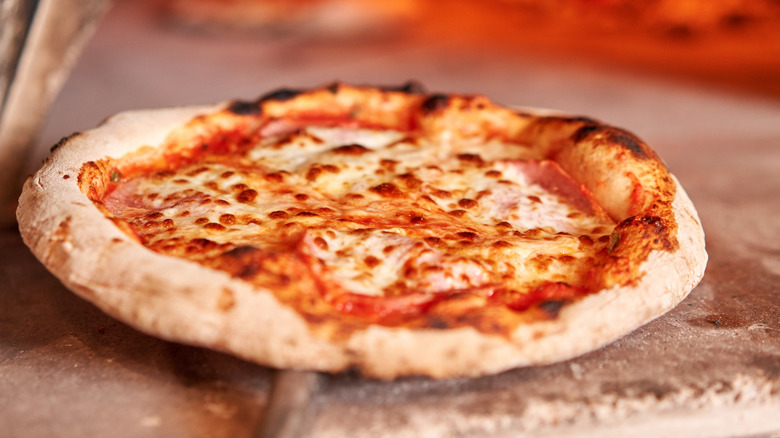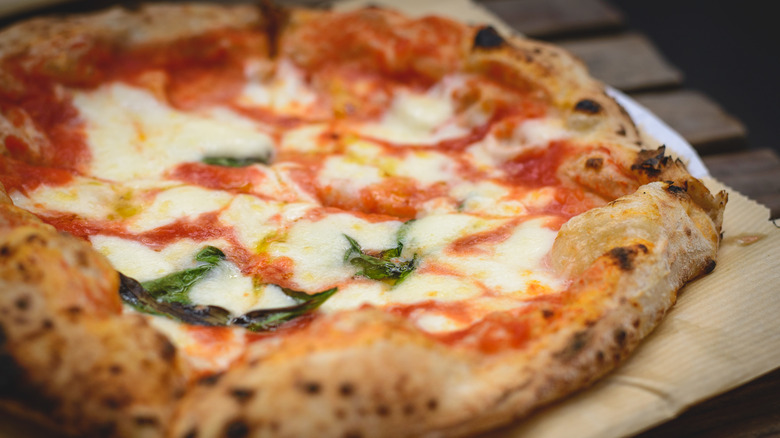The Difference Between Crust And Cornicione On A Pizza
If you are making or ordering pizza, your first thought might be about what goes on top of it. The sauce, cheese, and toppings tend to be the stars of the show when it comes to pizza, and for good reason. There are so many different types of pizza and so many sauce, cheese, and toppings combos that the possibilities can seem endless. From classic Margherita pizza to a pesto pizza or white sauce pizza to a more Americanized BBQ chicken pizza, there's something for everyone.
Perhaps the most overlooked part of the pizza is the crust itself. After all, it's not unsurprising to see pizza crusts cast aside after someone has consumed the other more multifaceted parts of the pie. Overlooking the part that the dough plays could be something you want to avoid though. Firstly, the part of the pizza that you grip onto isn't just the crust, it's technically called the cornicione, and here's why you should think twice before leaving it on your plate.
What Makes the Cornicione Special
According to PizzaHeaven.com, the outer rim of the pizza crust is the cornicione, which translates in Italian to edge or rim. They explain that the term "crust" is often incorrectly used to describe this part of the pizza, but the crust includes the entire surface area of the dough once it's cooked. The middle section of the crust is covered in sauce, toppings, and cheese, but the unique part about the cornicione is that it is enjoyed without any other flavors. It's a unique way to taste the dough itself unencumbered.
According to Pizza Ortica, the cornicione has an ideal texture of being fluffy and pliable, and that has to do with how the outer edge of the dough is worked before the pizza heads into the oven. They also explain that the lightness and airiness of the cornicone are achieved by allowing the dough to rise twice. It's also important that the edge of the dough be about four times as thick as the rest of the dough, allowing it to puff up more and create the perfect place for you to grip your slice. (also per Pizza Ortica.) Pizza makers take great care to create this outer rim of the crust and it's something to savor, rather than set aside. You can enjoy a proper cornicione when eating a Neapolitan-style pizza, or you can make it at home.

